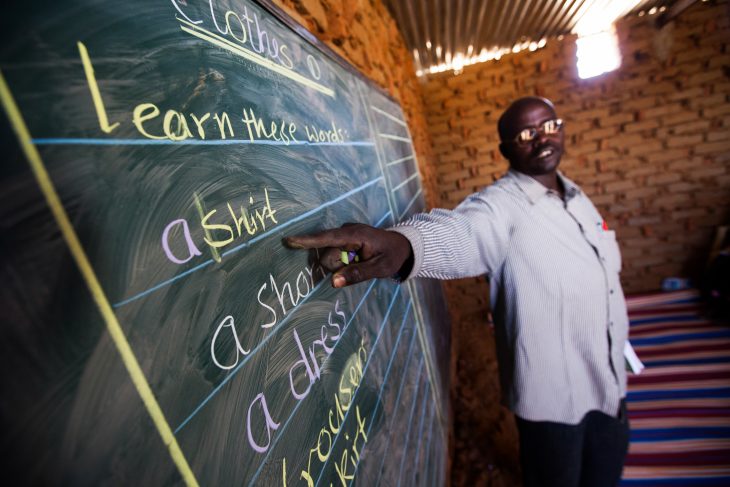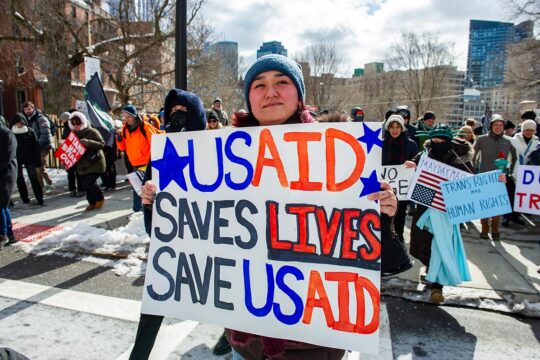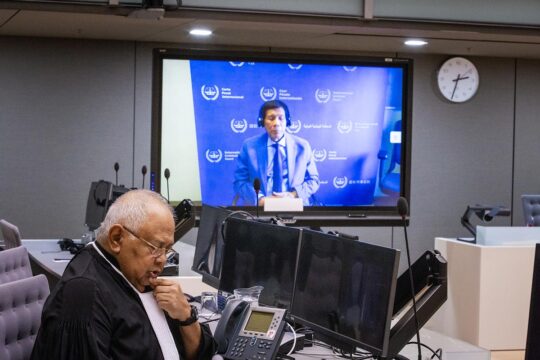The United Nations High Commissioner for Human Rights, Zeid Ra’ad Al Hussein, recently advocated a deeper form of education – one that “goes beyond reading, writing, and arithmetic to include skills and values that can equip people to act with responsibility and care…guided by human rights education to make informed choices in life, to approach situations with critical and independent thought, and to empathize with other points of view.”
Education is an important part of transitional justice and calls for new ideas about what and how we teach young people. If the goal is to use education to secure the promise of transitional justice, then teachers need significant support. Teachers play a critical role in fulfilling the promise of education in transitional justice settings because they are the gatekeepers to information. Teachers need to come to understand their own position in the post-conflict setting, they need extensive training, and they need to rebuild bi-directional trust. Moreover, they need opportunities to improve their capacity to teach the skills, dispositions, and habits of mind their students will need to contribute to a more just, equitable, and peaceful future. This paper argues that we must pay closer attention to the fundamental role teachers play in transitional justice efforts.
The intersection of education and transitional justice represents a growing body of literature (Bellino, Paulson, and Worden 2017; Paulson and Bellino 2017). A large portion of the research examines the phenomenon at the macro-level but should include a more robust conversation about teachers and how they operate at the micro-level. It is difficult to deny the influence teachers have with students and communities (Horner et al 2015). Teachers influence student thinking through their inclusion or exclusion of teaching methods, resources, and content (Thornton 1991). Furthermore, through the work they do with their students, teachers can influence entire communities.
Teachers maintain a significant influence over their students while transmitting the official and unofficial or hidden curriculum. Research into textbooks and other curriculum materials illuminate the narrative and memory students and teachers co-construct in the classroom, but do not fully appreciate how teachers use the materials in the classroom and the resulting hidden curriculum that emerges. Teachers are largely responsible for constructing the hidden curriculum and it remains a powerful factor in student learning about which we know very little (Ramírez-Barat and Duthie 2017). Teachers contend with many competing interests when trying to address the past.
All societies, but especially those emerging from conflict or mass atrocity, grapple to find meaning from their past. In his 2016 work, Confronting Evil, James E. Waller states, “as a social construction, past cultural trauma can lead to a redefinition of collective social identity that becomes reified in memorials, museums, school textbooks, rituals, performances, commemorations, sacred routines and popular culture.” Teachers sit at the confluence of these elements and help their students and communities confront the past. Thus, it is with teachers that students will begin to co-construct not only their knowledge of a violent past, but their identity from a violent past. Navigating these memories and narratives takes great care.
If teaching about the past is done without the proper assets in place, then societies emerging from conflict run the risk of entrenching deeply held grievances and forcing underground the sentiments, contested memories, and historical narratives that need to be available for dissection and examination. History education, especially at the secondary level, has been a focus of many education efforts in transitional justice (Bellino, Paulson, and Worden 2017). Transitional justice societies need to thread an additional starting point for teaching about the past. Students need to learn critical and creative thinking skills in conjunction with learning about their community’s past. Well-honed critical and creative thinking can help students analyze and evaluate the competing and contested narratives. By establishing a strong foundation, teachers can leverage students’ critical and creative thinking skills to coordinate human rights education with a study of the past.
There are no quick fixes for education. This notion is especially relevant when thinking about education in transitional justice settings. Education is multigenerational and requires a long-term view that includes empowering teachers and communities (Logan and Murphy 2017). In societies emerging from conflict, there needs to be a clear desire to empower local actors. Furthermore, transitional justice should value local knowledge and local pedagogical practices. Focusing on teachers means acknowledging the knowledge, skills, and dispositions needed to research, advocate, and teach in ways that confront a violent past. It is not easy to learn how to design and implement learning experiences that teach, develop, enhance, and allow students to learn how to think and act critically and creatively. And in many ways, teaching students to think and act critically and creatively demands a reexamining of the traditional education systems that rely on the memorization of discrete facts, and a shift to teaching in ways that give students the chance to make a choice. Conversely, teachers need support in the midst of a shift in education outcomes.
Teaching in post-conflict settings demands intense professional support. Access to high-quality transformative education rests on building teacher capacity. Teachers need early pre-service training that helps them understand their bias and enhances their ability to think critically and creatively. Education programs should recruit talented and committed individuals who are trained and willing to work in collaboration with communities. In schools, teachers should receive continuous, ongoing, high-quality professional development. Action research combined with professional learning community networks that span across geographic and identity boundaries hold potential promise (Logan and Murphy 2017). Establishing robust professional learning communities encourages teachers to be curriculum developers and not curriculum deliverers (Logan and Murphy 2017). Teachers need to have the space and support within their professional learning communities to understand, appreciate, and deconstruct their own understandings and interpretations of the past. Teachers need to learn how to produce and consume research while also mastering the pedagogical and content skills needed to design and implement coherent instructional experiences for their students. Especially in divided societies and societies emerging from conflict, teachers need the support to address their own trauma and that of their students and communities. Supporting teachers and developing their teaching capacity can aid reconciliation efforts, establish a just society, and prevent future atrocities.
Teachers are expected to do a lot, including helping to hasten world peace, and yet we can do more to support them. Ensuring that more students have access to quality instruction by developing teacher capacity to impart critical thinking skills, confront a violent past, and address historical injustices can move communities closer to reconciliation, the establishment of justice, and the prevention of future atrocities.






